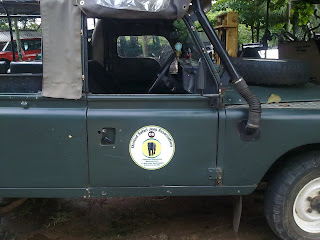Guards to prevent damage to light are also a worthwhile addition if you drive where stones are regularly flicked up. The grilles fitted to older Series Land Rovers look the part and withstand impacts well, and some are available for the current range of vehicles. Another solution is to use moulded Perspex protectors, which clip on to the lights and diffuse impacts from flying objects.
The steering and fuel tank can also sustain damage, and a wide variety of guards are available for all Land Rovers from the advertisers in Land Rover. When fitting accessories you’ll also need to consider the rest of the vehicle. A light bar on a Discovery roof is unlikely to cause problem on a chassis requires a decent base to start with. And a winch looks great on the front of a Land Rover but first time you use it, the winch and bumper will part company with the rest of the vehicle.




































